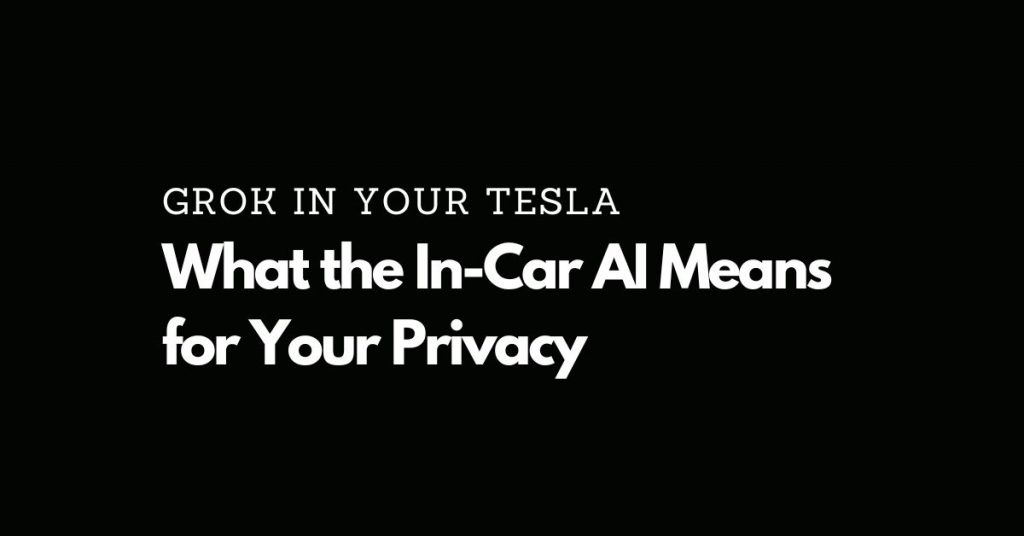Starting July 12, every new Tesla includes Grok, an AI chatbot from xAI, integrated into the vehicle’s touchscreen. Unlike other voice assistants, this innovation tightens the connection between Elon Musk’s companies, as he owns both Tesla and xAI. With a powerful language model in millions of cars, this update challenges the notion of privacy during your drive. Questions about Grok’s data access and processes have fueled concerns about the privacy of your ride.
What Happened
Tesla started adding the Grok AI chatbot to its new vehicles and this now is accessible via a dedicated button on Tesla’s in-car home screen. Users can interact with it similarly to OpenAI’s ChatGPT or Google’s Gemini. Although Grok doesn’t control car functions like air conditioning, it is positioned within the main infotainment interface for easy use.
Tesla has not disclosed financial details concerning its partnership with xAI. However, with 1.8 million vehicles sold in 2024, Grok’s reach could extend to millions quickly. Conversations with Grok are processed under xAI’s privacy policy, which involves collecting user content and sharing it with service providers and related firms. Tesla states these communications are anonymized, but the privacy policy hasn’t been updated since Grok’s introduction.
Tesla cars already collect extensive data (from camera footage and GPS locations to sensor readings) to enhance their systems and support autonomous driving. Despite allowing some user control over personal data, the specific details of Grok’s data usage remain undisclosed. Requests for further clarification from Tesla and xAI have gone unanswered.
Why It Matters
The integration of Grok into every new Tesla deepens the data relationship between drivers and their cars. Most people already know that modern vehicles generate a steady stream of location data, driving habits, and even interior camera footage. What makes Grok different is the potential for your in-car conversations, requests, and personal questions to become part of these data streams. Once an AI chatbot sits on your dashboard, it becomes another way of collecting personal signals, from your travel plans and contacts to the voice of anyone riding with you.
AI chatbots like Grok operate on vast amounts of user data to improve their responses. The privacy policies from xAI outline they may collect and share user content, but the specifics remain vague. When you interact with Grok, your queries might be stored, analyzed, and even shared with third parties. Even if data is anonymized, recent security lapses across the tech industry suggest identifying individuals is easier than many companies admit. Past AI breaches (like the one reported at Meta’s chatbot platform) have exposed private prompts when basic safeguards failed. Your casual questions to Grok in a Tesla could be far less private than you expect, and the full extent of data access is unclear.
This is part of a wider shift in how much control individuals truly have over their digital footprint. The push to make AI assistants omnipresent means the value of your personal information only rises, yet your influence over how that data is used shrinks. The lesson for privacy-conscious people is clear: questioning which technologies actually respect your data becomes the norm. For accessing smarter, more integrated AI, users risk giving up far more personal information than they realize.
What You Can Do
Grok’s arrival in your Tesla means you must decide if your in-car life remains private. Here are the steps you can take to maintain control:
Limit Your Grok Usage: While in your car, approach Grok with the same caution as any cloud-based assistant. Refraining from sharing sensitive details like personal matters, addresses, or banking information.
Review and Adjust Data Sharing Settings: Examine your Tesla account and vehicle’s privacy controls. Disable or limit optional data sharing, particularly related to telemetry and audio data. Contact Tesla support for guidance on settings affecting Grok interactions if necessary.
Request Your Data Regularly: Utilize Tesla’s data download capabilities to periodically review stored data. This helps verify data collection and address any unexpected entries.
Use Separate Accounts: When sharing a Tesla with others, maintain separate driver profiles and limit shared data. Avoid connecting third-party services to shared vehicle accounts.
Grok’s constant presence previews our forthcoming AI-driven reality, where most devices strive to learn and serve while possibly infringing on privacy. Companies may continue to blur the distinction between ease of use and surveillance unless there’s demand for better safeguards. Your choices on what you disclose, how you configure permissions, and how outspoken you are about privacy, can have an impact beyond your daily commute.

